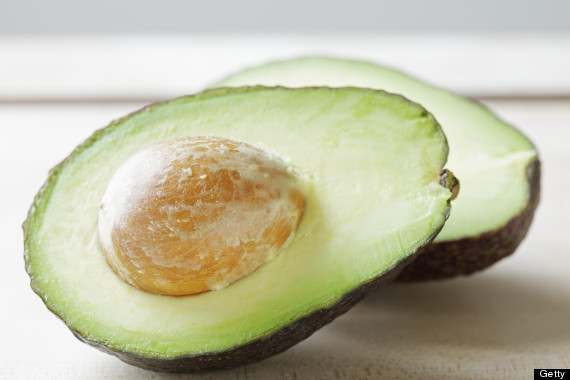You know they make a killer eggocado[1] and are beloved among guacamole aficionados. You might also know you can feel good eating one, thanks to healthy fats and loads of nutrients[2] . But the mighty powers of the avocado stretch farther than you probably realize.
An Avocado Is A Fruit, And More Specifically A Berry
You might be inclined to call it a vegetable, thanks to its green hue and savory taste, but the avocado is technically a fruit[3] , and even more specifically, a single-seeded berry. A fruit is "the matured ovary of a flower," according to University of California Agriculture & Natural Resources. Fruits consist of a tough outer layer (the skin or rind), a middle layer we typically think of as the flesh of the fruit and a casing around a seed (or seeds). Avocado is further classified as a fleshy as opposed to a dry fruit, and a berry rather than a drupe[4] , which has tough pits or stones, like peaches.
An Avocado Has More Potassium Than A Banana
A single avocado has 975 milligrams of potassium[5] , while a banana, well-known for being loaded with potassium, delivers just half that, with 487 milligrams per large fruit[6] .
They'll Ripen More Quickly With A Banana Or An Apple Around
Speaking of bananas! The yellow fruit -- as well as apples -- release ethylene gas, a naturally-occurring plant hormone. If you store your unripe avocados in a brown bag with an apple or a banana, the gases trapped in the bag[7] will help those green guys ripen more speedily, according to The Haas Avocado Board.
Avocados Are One Of A Few High-Protein Fruits
One avocado packs four grams of protein[8] , among the highest amount coming from a fruit[9] .
And it's good-quality protein to boot. While they don't contain every single amino acid required in the body's protein-building process, they do have all 18 of the important ones[10] , according to the San Francisco Chronicle. Plus, all of that protein is available for the body to use, while some of the protein you might get from meat sources is not.
You Can Swap Them Into Baked Goods Recipes For Butter
The creamy texture and healthy fats make for a surprisingly-easy baking substitution. And no, you won't be making green muffins. In the right ratios, you can ditch some butter and replace with avocado for healthier chocolate chip cookies, banana bread and brownies, thanks to these tasty avocado recipes[11] compiled by our friends at POPSUGAR Fitness.
You Don't Have To Eat Them To Reap Their Benefits
Nutritional perks aside, avocados can play a key role in your healthy hair and skin routine[12] . The antioxidants, amino acids and essential oils inside an avocado can help repair damaged hair, moisturize dry skin, treat sunburns and maybe even minimize wrinkles, HuffPost Style reported.
Also on HuffPost:
References
- ^ eggocado (www.huffingtonpost.com)
- ^ loads of nutrients (www.huffingtonpost.com)
- ^ avocado is technically a fruit (ucavo.ucr.edu)
- ^ berry rather than a drupe (ucavo.ucr.edu)
- ^ 975 milligrams of potassium (nutritiondata.self.com)
- ^ 487 milligrams per large fruit (nutritiondata.self.com)
- ^ gases trapped in the bag (www.avocadocentral.com)
- ^ four grams of protein (nutritiondata.self.com)
- ^ highest amount coming from a fruit (www.livestrong.com)
- ^ all 18 of the important ones (healthyeating.sfgate.com)
- ^ tasty avocado recipes (www.fitsugar.com)
- ^ healthy hair and skin routine (www.huffingtonpost.com)
- ^ Send us a tip (www.huffingtonpost.com)
- ^ Send us a photo or video (www.huffingtonpost.com)
- ^ Suggest a correction (www.huffingtonpost.com)

0 comments:
Post a Comment